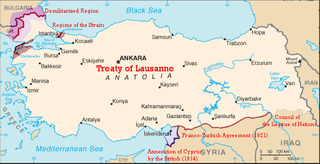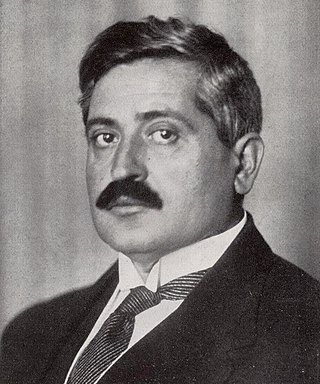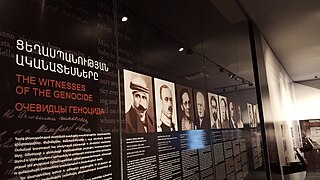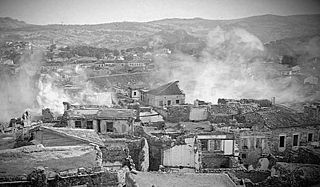
The Treaty of Lausanne is a peace treaty negotiated during the Lausanne Conference of 1922–23 and signed in the Palais de Rumine in Lausanne, Switzerland, on 24 July 1923. The treaty officially resolved the conflict that had initially arisen between the Ottoman Empire and the Allied French Republic, British Empire, Kingdom of Italy, Empire of Japan, Kingdom of Greece, Kingdom of Serbia, and the Kingdom of Romania since the outset of World War I. The original text of the treaty is in French. It emerged as a second attempt at peace after the failed and unratified Treaty of Sèvres, which had sought to partition Ottoman territories. The earlier treaty, signed in 1920, was later rejected by the Turkish National Movement which actively opposed its terms. As a result of the Greco-Turkish War, Izmir was reclaimed, and the Armistice of Mudanya was signed in October 1922. This armistice provided for the exchange of Greek-Turkish populations and allowed unrestricted civilian, non-military passage through the Turkish Straits.

The Armenian genocide was the systematic destruction of the Armenian people and identity in the Ottoman Empire during World War I. Spearheaded by the ruling Committee of Union and Progress (CUP), it was implemented primarily through the mass murder of around one million Armenians during death marches to the Syrian Desert and the forced Islamization of others, primarily women and children.

Mehmed Talaat, commonly known as Talaat Pasha or Talat Pasha, was an Ottoman politician and convicted war criminal who served as the de facto leader of the Ottoman Empire from 1913 to 1918. Talaat Pasha was chairman of the Union and Progress Party, which operated a one-party dictatorship in the Empire; during World War I he became Grand Vizier. He was one of the perpetrators of the Armenian genocide and other ethnic cleansings during his time as Minister of Interior Affairs.

The Greek genocide, which included the Pontic genocide, was the systematic killing of the Christian Ottoman Greek population of Anatolia which was carried out mainly during World War I and its aftermath (1914–1922) on the basis of their religion and ethnicity. It was perpetrated by the government of the Ottoman Empire led by the Three Pashas and by the Government of the Grand National Assembly led by Mustafa Kemal Atatürk, against the indigenous Greek population of the Empire. The genocide included massacres, forced deportations involving death marches through the Syrian Desert, expulsions, summary executions, and the destruction of Eastern Orthodox cultural, historical, and religious monuments. Several hundred thousand Ottoman Greeks died during this period. Most of the refugees and survivors fled to Greece. Some, especially those in Eastern provinces, took refuge in the neighbouring Russian Empire.

The Special Organization was an intelligence, paramilitary, and secret police organization in the Ottoman Empire known for its key role in the commission of the Armenian genocide. Originally organized under the Ministry of War, the organization was shifted to answer directly to the ruling party Committee of Union and Progress (CUP) in February 1915. Led by Bahaeddin Şakir and Nazım Bey and formed in early 1914 of tribesmen as well as more than 10,000 convicted criminals—offered a chance to redeem themselves if they served the state—as a force independent of the regular army.

Armenian genocide denial is the claim that the Ottoman Empire and its ruling party, the Committee of Union and Progress (CUP), did not commit genocide against its Armenian citizens during World War I—a crime documented in a large body of evidence and affirmed by the vast majority of scholars. The perpetrators denied the genocide as they carried it out, claiming that Armenians in the Ottoman Empire were resettled for military reasons, not exterminated. In the genocide's aftermath, incriminating documents were systematically destroyed, and denial has been the policy of every government of the Republic of Turkey, as of 2023, and later adopted by the Republic of Azerbaijan, as of 1991.

Mustafa Abdülhalik Renda was a Turkish civil servant and politician of Tosk Albanian descent who was acting President of Turkey for one day after Atatürk's death in November 1938. He is infamously known for his role in the Armenian genocide.

Mehmed Reshid was an Ottoman physician, official of the Committee of Union and Progress, and governor of the Diyarbekir Vilayet (province) of the Ottoman Empire during World War I. He is known for organizing the 1915 genocide of the Armenian and Assyrian communities of Diyarbekir, in which between 144,000 and 157,000 Armenians, Assyrians, and other Christians were killed. During the Allied occupation of Istanbul, Reshid was arrested and his roles in the massacres were exposed. He later escaped from prison, but committed suicide after being cornered by local authorities.

The Committee of Union and Progress, later the Union and Progress Party, was a revolutionary organization and political party active between 1889 and 1926 in the Ottoman Empire and the Republic of Turkey. The foremost faction within the Young Turk movement, it instigated the 1908 Young Turk Revolution, which ended absolute monarchy and began the Second Constitutional Era. From 1913 to 1918, the CUP ruled the empire as an authoritarian one-party state and committed genocides against the Armenian, Greek, and Assyrian peoples as part of a broader policy of ethnic erasure during the late Ottoman period. The CUP was associated with the wider Young Turk movement, and its members have often been referred to as Young Turks, although the movement produced other political parties as well. Within the Ottoman Empire its members were known as İttihadcılar ('Unionists') or Komiteciler ('Committeemen').

Witnesses and testimony provide an important and valuable insight into the events which occurred both during and after the Armenian genocide. The Armenian genocide was prepared and carried out by the Ottoman government in 1915 as well as in the following years. As a result of the genocide, as many as 1.5 million Armenians who were living in their ancestral homeland were deported and murdered.

George Edward White was an American Congregationalist missionary for the American Board of Commissioners for Foreign Missions for forty-three years. Stationed in the Ottoman Empire during the Armenian genocide as President of the Anatolia College in Merzifon, White attempted to save the lives of many Armenians, including "refused to tell" where Armenians were hiding so to save them from getting deported or killed. Thus he became an important witness to the Armenian Genocide.

Sürgün or verb form sürmek was a practice within the Ottoman Empire that entailed the movement of a large group of people from one region to another, often a form of forced migration imposed by state policy or international authority. The practice was also a form of banishment or exile often applied to the elites of Ottoman society, the Pashas. It was most famously used as a method to forcefully displace the native ethnic Armenians by the Young Turk government in 1915, in order to deal with a perceived threat from Armenian partisan groups receiving military support from the, Ottoman hostile, Russian Empire. These events are listed as one of the methods used to complete the Armenian Genocide.

The massacre of Phocaea occurred in June 1914, as part of the ethnic cleansing policies of the Ottoman Empire that included exile, massacre and deportations. It was perpetrated by irregular Turkish bands against the predominantly ethnic Greek town of Phocaea, modern Foça, in the east coast of the Aegean Sea. The massacre was part of a wider anti-Greek campaign of genocide launched by the Young Turk Ottoman authorities, which included boycott, intimidation, forced deportations and mass killings; and was one of the worst attacks during the summer of 1914.
The evacuation of Ayvalik took place in May 1917 as part of the genocide policies of the Ottoman government. The population of the predominantly Greek-inhabited town of Ayvalik, Ottoman Empire on the east coast of the Aegean Sea was forcibly deported to the hinterland of Anatolia by the Ottoman authorities. The deportation was organized by Imperial German Army General and chief military adviser to the Ottoman Empire, Liman von Sanders, and included death marches, looting, torture and massacre against the local civilian population.

During World War I, Imperial Germany was a military ally of the Ottoman Empire, which perpetrated the Armenian genocide. Many Germans present in eastern and southern Anatolia witnessed the genocide, but censorship and self-censorship hampered these reports, while German newspapers reported Turkish denial of the massacres. About 800 Imperial German Army officers and 25.000 German soldiers were an integral part of the Turkish army and belonged to its command and general staff. It is known that individual German military advisors signed some of the orders that led to deportations of Armenians.
National economy is the economic plan, essentially kleptocratic, envisioned by Ziya Gökalp and carried out by successive Ottoman and Turkish governments, which involved the systematic dispossession of native Christian upper-classes and their replacement by Muslim Turks, in addition to large-scale confiscation and redistribution of Christian-owned property. Türk Yurdu announced 1915 as the starting year of the national economy. To Emil Ludwig, Talaat Pasha mentioned that the loss of the Armenian workforce would damage the economy for a short while, but that Turks would step in their positions and replace the Armenians soon.

On 15 March 1921, Armenian student Soghomon Tehlirian assassinated Talaat Pasha—former grand vizier of the Ottoman Empire and the main architect of the Armenian genocide—in Berlin. At his trial, Tehlirian argued, "I have killed a man, but I am not a murderer"; the jury acquitted him.

On 24 May 1915, on the initiative of Russia, the Triple Entente—Russia, France, and the United Kingdom—issued a declaration condemning the ongoing Armenian genocide carried out in the Ottoman Empire and threatening to hold the perpetrators accountable. This was the first use of the phrase "crimes against humanity" in international diplomacy, which later became a category of international criminal law after World War II.

Differing views of what caused the Armenian genocide include explanations focusing on nationalism, religion, and wartime radicalization and continue to be debated among scholars. In the twenty-first century, focus has shifted to multicausal explanations. Most historians agree that the genocide was not premeditated before World War I, but the role of contingency, ideology, and long-term structural factors in causing the genocide continues to be discussed.

Below is an outline of Wikipedia articles related to the Greek genocide and closely associated events and explanatory articles. The topical outline is accompanied by a chronological outline of events. References are provided for background and overview.


















